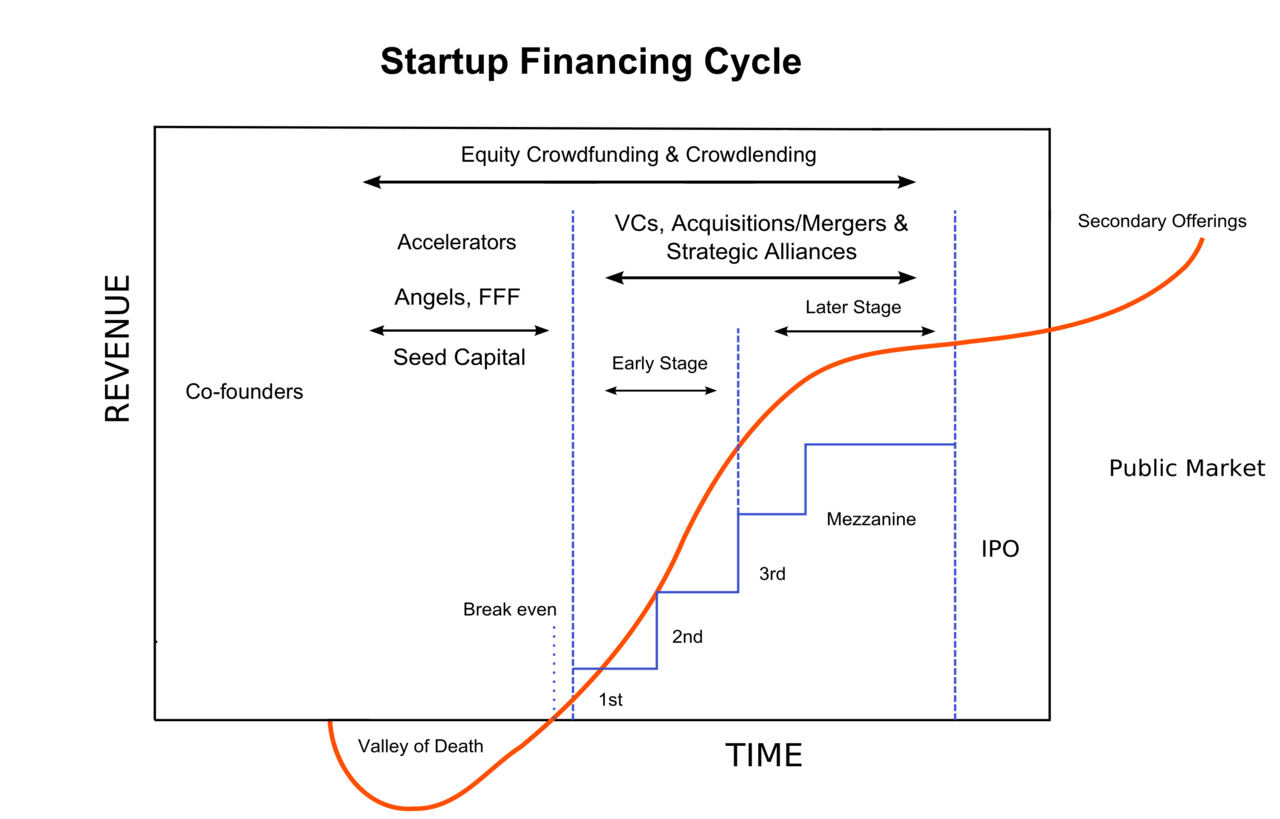Last week I started a set of blog posts likening KM implementation to a business start-up. Here is number 4 in the series.
 |
| Image from wikimedia commons |
- Little or no market for the product;
- The business model fails;
- Poor start-up management team;
- Running out of cash;
- Product problems.
Managing the flow of funds so you don't run out of cash
The same is true for KM. A KM implementation budget may be needed for over a decade, and the annual budget will usually increase during that time. It will be very difficult to secure the totality of such a budget in advance. Instead the KM team can learn from business start-ups and seek funding only as far as the next investment milestone.
There are 5 main milestones or decision points in a KM implementation project which can be linked to the assignment of additional funds. At each of these milestones the budget is likely to increase.
1. The initial funding milestone is a decision to fund a temporary task force to determine whether KM is of sufficient potential interest that a KM team should be formed.
2. The second milestone is a decision to fund a KM team to conduct the Assessment phase. The team will investigate the potential value to be gained through KM, the market for KM within the organisation, the needs of the stakeholders, the size of the potential prize, the current state of KM in the organisation, and how much investment is required. They will output a KM business case, strategy and implementation plan, and will make the case that the potential value in KM merits further funding.
3. If the KM team has made the case for investment in KM implementation, they will request a budget to fund the piloting stage. This decision allows the team to start testing and piloting initial KM approaches and prototype versions of the Framework within the organisation, focusing on solving business problems. Part of the purpose of the piloting stage is to gather data to show that KM delivers more value than it costs, and to justify the next decision.
4. The fourth decision comes at the end of the piloting stage, in order to fund the roll-out stage. If the pilots were successful, the value of KM to the business and to the employees has been proven, and the integrated KM framework has been tested in the business and shown to be robust. Now the organisation needs to fund roll-out of the Framework to the whole organisation.
5. Once KM is embedded, the fifth milestone involves standing down the implementation team and handing KM over to a management team. At this stage funding will be operational funding rather than project funding. This phased approach, where investment for each phase is justified by the work of the previous phase, allows for an escalating set of evidence-based financing decisions and should ensure the KM budget does not run dry.
An alternative approach is to fund the program on an annual basis. This is what Mars did, according to Linda Davies, quoted in The Knowledge Manager's Handbook.
"From the beginning, KM was run as a separate division with its own business plan, detailing how and why KM was to be implemented. The business plan followed standard business planning practice, with a broad three year time horizon and a detailed one year plan submitted annually as part of the regular business planning cycle. This detailed the overall objectives for the following year, the timescale for the planned activities plus the costs and resource requirements....
The power of focusing on two or three challenges in any one year became apparent, resulting in rapid progress and big wins and proving the concept of the value that KM can bring to the business. This led to a regular increase in KM budget and resource which enabled subsequent initiatives"




No comments:
Post a Comment